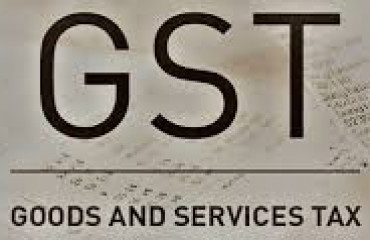
There’s popular joke doing the rounds on social media which goes like this—GST on paneer: 5%. GST on butter: 12%. GST on masala: 5%. Now calculate the GST on Paneer Butter Masala!
There's popular joke doing the rounds on social media which goes like this—GST on paneer: 5%. GST on butter: 12%. GST on masala: 5%. Now calculate the GST on Paneer Butter Masala!
As a joke, it would have been incomprehensible to non-Indians, but it rang an immediate bell with millions of Indians who have had to battle with the absurdities of India's notoriously complex tax laws for decades.
So much so, that Finance Minister Nirmala Sitharaman had to take to Twitter to defend the GST on food items, saying the decision was taken by a committee of state ministers which largely consisted of representatives of Opposition-ruled states. The decision in fact was a collective decision of the GST Council with members from the centre and states.
The GST has gone through numerous twists and turns. Including in case of GST on popular staples like rice, dals and atta.
Originally, the GST was only levied on such staples sold in branded, packaged form. Items sold loose were exempted, but there was a catch—if put into a packet by the store, and the packet had the store's name on it, it technically became "packaged and branded".
Small traders and shopkeepers protested vociferously, claiming that merely providing a packet to the consumer should not constitute as packaging.
So then the mandarins clarified that only brands which enjoyed trademark protection or other such legal cover would be taxed and others not. Unfortunately, this meant that a bulk of grocery sales again went out of the GST bracket, which pinched the states' pockets.
Another round of clarifications followed. This time, any package which met some provisions of the Legal Metrology Act came under the Act. So it was taxable if the package contained declarations like weight, price and expiry. But the fine print said that whether the actual pack actually contained these declarations did not matter. It also said that the rule applied to the package "whether sealed or not", so the concept of 'pre-packaged' effectively went out of the window.
What did the traders do now? They discovered another loophole—packages exceeding 25 kg weight sold in retail were exempt. So now, shops are offering packages of over 25 kgs in weight to customers. For those wanting less, the same pack can be opened and smaller quantities sold loose, without attracting tax (provided the store did not furnish the packaging).
The game of cat and mouse between the taxman and tax dodgers isn't on in the small traders segment alone. India Inc has been just as adept at innovating to get around taxes. Back in the early days of the automobile manufacturing revolution in India, and when the government was still invested in a small car manufacturing venture, the taxman decreed that cars less than four metres in length would be taxed at eight per cent excise duty. A millimetre over and the rate shot up to 20 per cent.
The result was an explosion of small cars in India. With Maruti and Hyundai dominating the market with their sub-4-metre hatchbacks, every other carmaker who followed had to have an offering in that segment. Ditto for differential taxes on cars based on seating capacity. Cars that exceeded the four-metre length cut-off fell into the higher bracket, but went back into the lower category if they carried seven or more people—so all big vehicles squeezed in a third row which could only fit small children or exceptionally vertically challenged adults, but nevertheless took them into the "people mover" category and a lower tax bracket.
One would have thought that after the introduction of the GST, which taxes all forms of motorised vehicles at a uniform rate of 28 per cent (with the exception of vehicles for the specially abled), all these jugaad innovations to somehow not pay taxes, or pay as little tax as possible, would have gone. But no, the taxman introduced something called a special compensation cess, which—you guessed it— varies based on length, engine size and so on.
So a petrol/CNG/LPG car less than four metres in length and engine capacity of less than 1200 cc attracts compensation of one per cent. If the length increases beyond four metres, the cess climbs to 15 per cent. And if the engine crosses 1,200 cc (regardless of length) it jumps to 22 per cent. And so on—differing rates for every possible length/engine cubic capacity/fuel combination you can think of. That's why more than 75 per cent of all vehicles sold in India are still in the sub-four-metre category (India is the sub-sub-compact SUV capital of the world), and even a high-end SUV carries a third row of seats.
Quixotic taxation rules have arguably been one of the more powerful incentives to innovate for India Inc. Behind every Indian innovation—from a small, single-use sachet of detergent to a mini pack of glucose biscuits—there is a tax rule hiding behind it somewhere.
Such instances are so ubiquitous that most Indians don't even notice them. The reason that your neighbourhood Udipi hotel has an "AC Room" is that food sold in an air-conditioned establishment attracted a higher tax than food sold in an non-air-conditioned one. The reason why bars in even high-end hotels have a small sign somewhere saying "permit room" is that under prohibition rules (applicable in Mumbai, for instance), only drinkers with government-issued permits can legally drink. The government's bid to promote ayurveda by cutting taxes on ayurvedic products led to Vicks VapoRub suddenly turning an ayurvedic product in India. This also explains why Shahnaz Husain's ayurvedic beauty products can outcompete occidental rivals on price.
This is the sort of maze of tax rules and incidence the GST was supposed to simplify, but has fallen victim to the old habits of the tax collectors and the tax dodgers.
